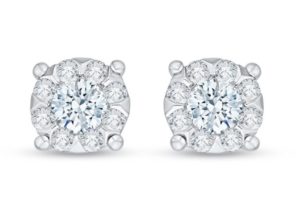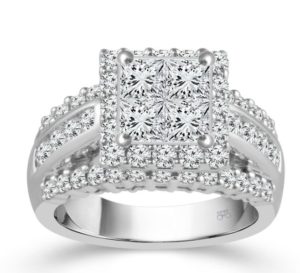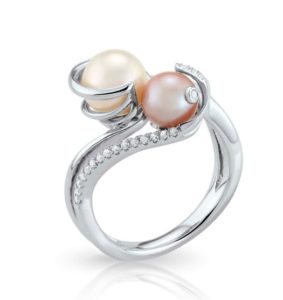Omni-Channel Surfing
The biggest retail trend for 2018 is the growth of omni-channel retailing, a combination of both in-store and online shopping that’s experienced seamlessly across multiple channels via whichever mode the customer prefers, cites the customer relationship management platform Salesforce.
 Omni-channel retailing links all channels together, combining the showroom and website to create a unified experience. It’s a model in which customers can interact with multiple sales and media channels at once, and have their information retained by the retailer as they move between them.
Omni-channel retailing links all channels together, combining the showroom and website to create a unified experience. It’s a model in which customers can interact with multiple sales and media channels at once, and have their information retained by the retailer as they move between them.
This experience allows consumers to browse on a desktop, compare prices on a mobile device, and visit a brick-and-mortar location to finalize a sale—all without restarting the customer journey. Shoppers may choose to interact with brands across multiple digital channels, bouncing between mobile, web, and social before completing their purchase, which can also be managed across channels—i.e. buy online and pick up in-store or buy in-store and ship items.
But despite 73% of shoppers using multiple channels during their shopping journey, Salesforce research reveals that only 28% of B2C companies are available to serve customers on every channel. Some two-thirds of retailers are failing to cater to the shopping preferences of two-thirds of their audience, so there’s work to be done.
Fiona Swerdlow, analyst with Forrester Research, reports that U.S. online shoppers research and shop interchangeably between digital touchpoints and stores, underscoring the importance and complexity of delivering great experiences across a growing network of touchpoints. Although the customer journey is more fluid and flexible, she says shoppers still expect a single, seamless shopping experience.
Strong Digital Presence
“To compete today jewelers have to give their stores regular facelifts, carefully consider their jewelry mix, and add digital components such as interactive websites, social media platforms, apps and customer service components.” said Amanda Gizzi, JA director of public relations in a Nov. 19 article in Forbes by Pam Danziger, president of Unity Marketing, Stevens, Pennsylvania.
Danziger cites a recent study by the Jewelers of America revealing that 40% of local jewelers view e-commerce websites as their primary competitive threat, yet only 34% of them have e-commerce capability on their own websites. Gizzi emphasizes: “Jewelry stores don’t necessarily need to sell online to compete online, but they need a strong digital presence.” That means jewelers must be effectively positioned online to be top of mind in the pre-purchase research that often starts there.
In fact, Forrester cites from holiday polling that 60% of shoppers use their phones to do research even when in store to look up product information, do price comparisons, and check online reviews. Businesses that optimize for mobile conversions will be the big winners, says Jay Gerber for the diamond jewelry manufacturer, WR Cobb, East Providence, Rhode Island.
“All the touch points you can use to make things convenient, timely, informative, and personal matter,” says Gerber. “Jewelers must have a mobile-responsive website to succeed. People are communicating, researching and buying things on their phones for convenience and immediacy.” WR Cobb offers an ecommerce platform adaptable to mobile and tablet devices that jewelers can brand and customize featuring their own inventory, as well as accessing the vendor’s virtual stock, with cool bells and whistles like 3D rotational videos, high-quality product images, in-store kiosk, and online marketing services.
 Pick Your Partners
Pick Your Partners
Business is tough and vendor-retail partnerships are more important than ever says Alok Mehta, CEO of IDD, New York. “There has been a lot of consolidation on both the retail and vendor sides of the business. It is continuing to happen and should be happening. This is not the market where everyone will do well. Retailers have been extremely conservative in how they manage their inventory and marketing budgets. They realize they need a few strong vendor partners to be successful. We see our relationships with our customers as long term.”
Mehta notes that IDD works with motivated retailers who are already good at marketing their own brand, offering quality products at attractive prices in collections that tell a story (i.e. Y.O.U., Harmony, Foreverday, 2BeLOVED). IDD backs that up with a suite of support services like stock balancing, trunk shows, display and packaging, and marketing to help retailers be successful. “Retailers working with a game plan and not just riding the wave will do well.”
Scott Rauch, president of SHR Jewelry Group, a division of SDC Designs, New York says his company has been working hard to put out the right product, backed by a good story, and paired with the best retail champions. He cites as examples successful brands like Esquire at Macy’s, which that teaches men how to style a well-dressed wrist; and Anne Geddes “Protect, Nurture, Love” at HSN for moms and anyone who appreciates new life and nature.
Challenging for vendors is the fact that retailers are not looking to place stock orders, with inventory in general still high and changes in how consumers are buying, particularly online, says Neil Shah of Shah Luxury, New York. “A lot of inventory is flushing out of the market.” But he sees tremendous growth in the custom design work the manufacturer offers—a partnership that can help independents differentiate themselves without having to manage the service, which can be a nightmare and take time away from running their business.
Leave a Reply
You must be logged in to post a comment.